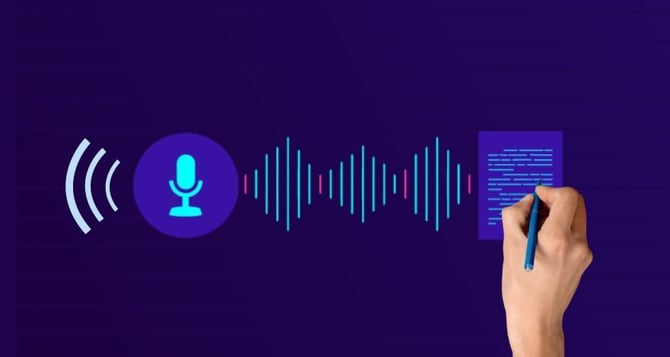AI for Text-to-Speech and Speech-to-Text: Beyond Virtual Assistants
Explore the expanded horizons of Text-to-Speech and Speech-to-Text technologies powered by AI. From accessibility aids to interactive education, discover their diverse applications and learn the technical implementations using Node.js.

AI has transformed society by automating tasks, improving healthcare, and enhancing customer service. It's revolutionized finance, transportation, and education but also raises ethical concerns.
It influences job markets and drives economic growth, with unique ethical considerations in healthcare. Managing its potential benefits and challenges is crucial for the future.
Artificial Intelligence (AI) has ushered in a new era of advancements in language processing, particularly in the realms of Text-to-Speech (TTS) and Speech-to-Text (STT) technologies.
While virtual assistants like Siri and Alexa have popularized these applications, the potential extends far beyond personal assistants. In this article, we'll explore the broader applications of AI in TTS and STT, delving into technical implementations using Node.js.
The Expanding Landscape of TTS and STT
Text to speech and Speech-to-Text technologies have evolved beyond mere virtual assistants, becoming integral components in various domains. From accessibility features to language translation and transcription services, the impact of AI in transforming spoken and written communication is profound.
Building a Multifunctional TTS and STT System with Node.js
Let's dive into the technical aspects of creating a versatile TTS and STT system using Node.js. In this example, we'll use the `google-text-to-speech` and `@google-cloud/speech` libraries for TTS and STT functionalities, respectively.
Node.js Implementation
1. Set Up Your Development Environment
Begin by setting up your Node.js development environment and installing the required packages.
2. Create an Express Server for TTS and STT
Set up an Express.js server to handle TTS and STT requests.
3. Run Your App
Run your Node.js server using the following command:
Your multifunctional TTS and STT system should now be accessible at `http://localhost:3000/text-to-speech` and `http://localhost:3000/speech-to-text` or the specified port.
Beyond Virtual Assistants: Applications of TTS and STT
1. Accessibility Features: TTS aids visually impaired users by converting text into spoken words, while STT enables hands-free interaction for those with motor impairments.
2. Language Translation: TTS can be used to convert text into spoken words in different languages, and STT facilitates translating spoken words into text for further processing.
3. Transcription Services: STT is essential in transcription services, converting spoken content into written text for a variety of applications, from meetings to interviews.
4. Interactive Educational Tools: TTS can enhance educational tools by providing spoken feedback and instructions, while STT can facilitate interactive learning through voice commands.
Considerations and Best Practices
1. Privacy Concerns: Implement robust privacy measures, especially when dealing with sensitive spoken or written content.
2. Language Support: Ensure that TTS and STT models support a wide range of languages to cater to diverse user bases.
3. Real-time Processing: Optimize TTS and STT systems for real-time processing to minimize delays in user interactions.
4. Scalability: Design systems to scale seamlessly, particularly in applications with a large user base or high demand.
5. User Feedback Integration: Incorporate user feedback mechanisms to improve TTS and STT accuracy and functionality continuously.
Conclusion
AI-driven Text-to-Speech and Speech-to-Text technologies, powered by Generative AI Development, have transcended their initial roles in virtual assistants, becoming pivotal in diverse applications.
By leveraging Node.js and integrating powerful AI libraries, developers contribute to the creation of multifunctional systems that enhance accessibility, communication, and interaction across various domains. As technology continues to advance, the role of AI in shaping the future of spoken and written communication remains both exciting and transformative.














